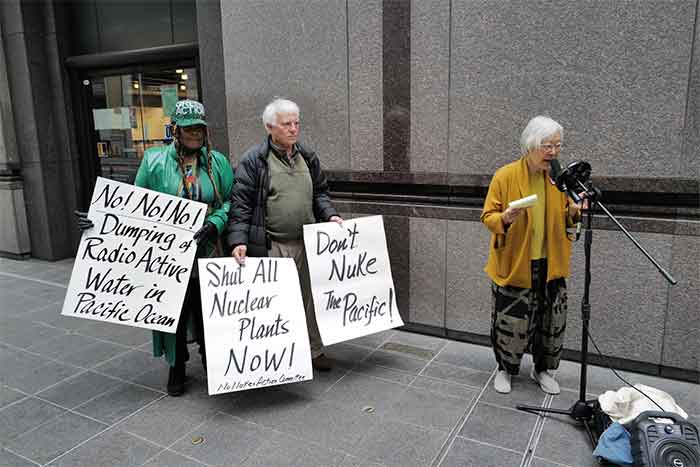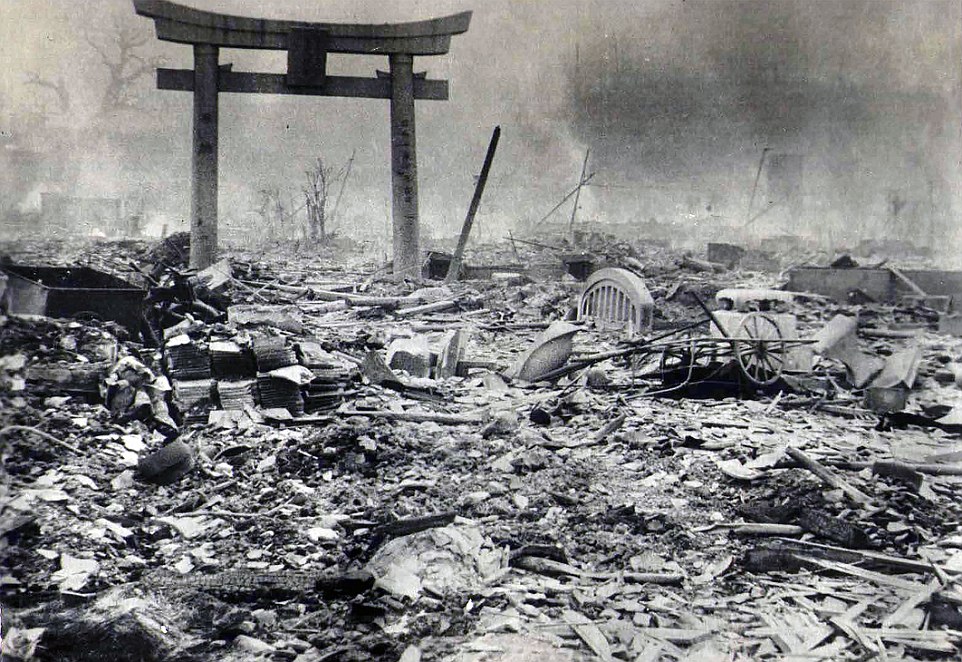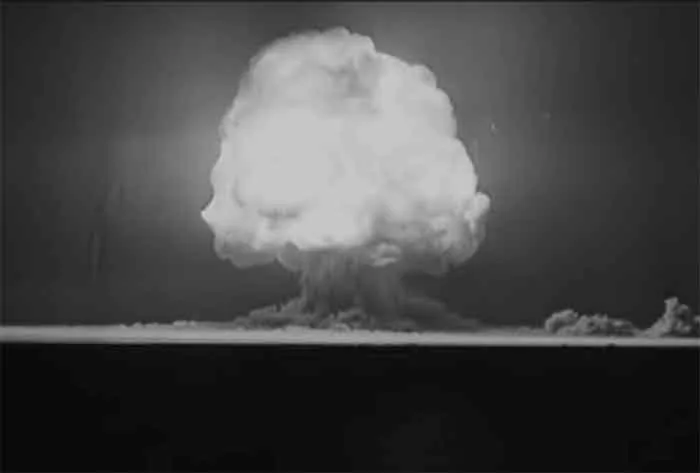
Much to the aggravation of concerned environmental activists, the Japanese government has approved the Tokyo Electric Power Company (TEPCO) plan to begin releasing the “treated” radioactive water into the Pacific Ocean that is stored at the Fukushima nuclear power plant beginning later this month. The water used to cool the radioactive fuel rods from the plant that was damaged in the 9.0-magnitude Great East Japan Earthquake and subsequent tsunami on March 11, 2011, is presently being held in 1,000 massive storage containers on site. Presently, the massive water storage tank farm is 96 percent full and is running out of space to store an additional 100,000 liters of contaminated water being added to it each day.
In all, the plan calls for the release of 1.3 million tons of water gradually over the next 30 to 40 years to be dumped into the Pacific Ocean, a volume that would fill 500 Olympic-size swimming pools.
In venting their aggravation and to inform the public of the ongoing Fukushima disaster and its worldwide environmental and health consequences, a small group of dedicated and concerned activists held their 100th protest on August 11 outside of the Japanese Consulate.
Speaking to the issue of the pending release, organizer Chizu Hamad responded to a question regarding the disbanding of the protest now that the Japanese government approved that plan for the water’s release. Hamad responded that the group would not do so because “People don’t know that Japan will release the radioactive water. And, also, people believe the government that the water is safe and clean – not harmful – and that there is nothing wrong with dumping it into the Pacific Ocean. Even if they release the water, if any major worldwide opposition is encountered the company could cease the discharge since they installed a shut off valve to the pipe.”
TEPCO for its part has stated that the radioactive water being dumped has been treated by an “advanced treating system” (ALPS) to prepare it for release and as such poses no threat to the ocean, marine life or that of people. However, activists refuse to believe the water’s release will not be without consequences and refer to the entire matter yet as another chapter of the blatant disregard for the long-term health of people and our planet along with that of future generations.
As reported here earlier, however, a report in the Global Times published on March 27 of this year stated that the treated water “…still contains radionuclides that are not able to be removed…Including ruthenium, strontium-90 and iodine-129, in addition to tritium.” Part of the release includes the dilution of “…the water to bring the tritium to below regulatory standards.” Tritium is a rare radioactive isotope that was once used to illuminate watch faces due to its ability to emit light without an external light source. It can efficiently do so during its half-life of 12 years.
As a Berkeley resident, in her attempt to condemn the dumping of the radioactive water that she characterized as a “violation of International Maritime Law” (see the1972 London Convention, international treaty) Hamad attempted to enlist the Berkeley City Council to pass a resolution opposing and condemning the plan. Although she initially had the support of two council members, her resolution when put up for a vote did not pass. When she inquired why she was told that “The Japanese Embassy had made phone calls to council members prior to the voting. I cannot myself believe that the Japanese government directly intervened into the voting. We were fully dismayed and disappointed. We hoped that ‘Nuclear free Berkeley’ would pass the resolution and when they didn’t it was very painful” she stated.
Once that discharge begins and tritium is introduced into the water it will be taken up by sea life in entering the food chain. Migratory fish in the coastal area of the plant will in turn transport it across the ocean posing health problems including an increased risk of cancer for people who may ingest large quantities of the contaminated fish. One such migratory species used in sashimi and sushi is the ever-popular Bluefin Tuna (Thunnus orientalis). That species is already widely known to contain unsafe levels of mercury and/or PCBs that are harmful to humans.
Findings from the Proceedings of the National Academy of Sciences journal article just five months after the Fukushima plant disaster in 2012 revealed that Bluefin Tuna caught near San Diego had “Tiny amounts of caesium-137 and caesium-134.” They further elaborated that the fish “…had carried the radioactive materials across the Pacific Ocean faster than those conveyed by wind or water.”
Greenpeace stated that TEPCO has not revealed all and that “the water contains materials (carbon-14) that could potentially damage human DNA.”
Another finding, however, disputes the danger proposed by the release. The UN’s International Atomic Energy Agency (IAEA) at the request of the Japanese government studied the impact of the water’s release concluding that the “…gradual discharges of the treated water to the sea, as currently planned and assessed by TEPCO, would have a negligible radiological impact on people and the environment…the discharge of ALPS treated water taken by Japan are consistent with relevant international safety standards.” That conclusion has done little to create confidence in activists who continue to warn of the possible effects of such a release.
The premise is based on numerous historical findings made by scientists and regulatory agencies who have pronounced as “safe” various levels of chemicals and other materials in the environment and for human exposure to them only to later discover their findings were inaccurate, false or misleading. The once ‘harmless” miracle insecticide DDT of the1940s was banned in 1972 while ozone depleting chlorofluorocarbons (CFCs) were banned in 1972. These are shining examples among a long laundry list of chemicals and materials that were later banned or listed as dangerous and injurious to people and our planet.
The wonderful modern world of chemistry has time and again reversed course to list one of its miracles or another as harmful and dangerous or both, thus, the obvious skepticism by activists who play the “canary in the coal mine” role of calling attention to such questionable shortsightedness, convenience and inexpensive solutions to complex problems.
Add to all this the numerous nations who have long histories of regularly dumping both high-and low-level radioactive waste in the oceans along with the numerous nuclear materials generated during an era of atmospheric testing and what we have today is a growing concentration of worldwide “nuclear soup.” While the world’s oceans are extensive, covering a third of the planet, everything on Earth is finite. We truly live in an enclosed terrarium. Once you put it in, you can’t take it out.
photo by Phil Pasquini
Phil Pasquini is a freelance journalist and photographer. His reports and photographs appear in the Washington Report on Middle East Affairs, Pakistan Link and Nuze.ink. He is the author of Domes, Arches and Minarets: A History of Islamic-Inspired Buildings in America.
© 2023 nuzeink all rights reserved worldwide
(This article has previously appeared in the Washington Report on Middle East Affairs, Pakistan Link and Nuzeink.)















































